Hominins on Sulawesi during the Early Pleistocene
- PMID: 40770096
- PMCID: PMC12507672
- DOI: 10.1038/s41586-025-09348-6
Hominins on Sulawesi during the Early Pleistocene
Abstract
The dispersal of archaic hominins beyond mainland Southeast Asia (Sunda)1 represents the earliest evidence for humans crossing ocean barriers to reach isolated landmasses2-4. Previously, the oldest indication of hominins in Wallacea, the oceanic island zone east of Sunda, comprised flaked stone artefacts deposited at least 1.02 ± 0.02 million years ago (Ma) at Wolo Sege on Flores5. Early hominins were also established on the oceanic island of Luzon (Philippines), as indicated by both stone artefacts and cut marks on faunal remains dating to between 777 and 631 thousand years ago (ka) at Kalinga6. Moreover, fossils of extinct, small-bodied hominins occur on Flores (Homo floresiensis)7-12 and Luzon (Homo luzonensis)13. On Sulawesi, the largest Wallacean island, previous excavations revealed stone artefacts with a minimum age of 194 ka at the open site of Talepu in the Walanae Depression14, long preceding the earliest known presence of modern humans (Homo sapiens) in the region (73-63 ka in Sunda)15. Here we show that stone artefacts also occur at the nearby site of Calio in fossiliferous layers dated to at least 1.04 Ma and possibly up to 1.48 Ma, using palaeomagnetic dating of sedimentary rocks and coupled Uranium-series (U-series) and electron-spin resonance (US-ESR) dating of fossil teeth. The discovery of Early Pleistocene artefacts at Calio suggests that Sulawesi was populated by hominins at around the same time as Flores, if not earlier.
© 2025. The Author(s).
Conflict of interest statement
Competing interests: The authors declare no competing interests.
Figures

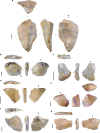



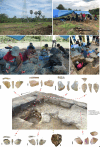
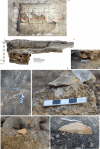
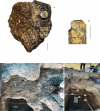

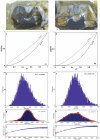
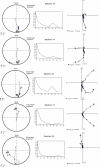


References
-
- Hanebuth, T. J. J., Voris, H. K., Yokoyama, Y., Saito, Y. & Okuno, J. Formation and fate of sedimentary depocentres on Southeast Asia’s Sunda Shelf over the past sea-level cycle and biogeographic implications. Earth-Sci. Rev.104, 92–110 (2011).
-
- Morwood, M. & van Oosterzee, P. The Discovery of the Hobbit: The Scientific Breakthrough That Changed the Face of Human History (Random House, 2007).
-
- Dennell, R. W., Louys, J., O’Regan, H. J. & Wilkinson, D. M. The origins and persistence of Homo floresiensis on Flores: biogeographical and ecological perspectives. Quat. Sci. Rev.96, 98–107 (2014).
-
- Ruxton, G. D. & Wilkinson, D. M. Population trajectories for accidental versus planned colonisation of islands. J. Hum. Evol.63, 507–511 (2012). - PubMed
-
- Brumm, A. et al. Hominins on Flores, Indonesia, by one million years ago. Nature464, 748–752 (2010). - PubMed
Publication types
MeSH terms
LinkOut - more resources
Full Text Sources
Miscellaneous

